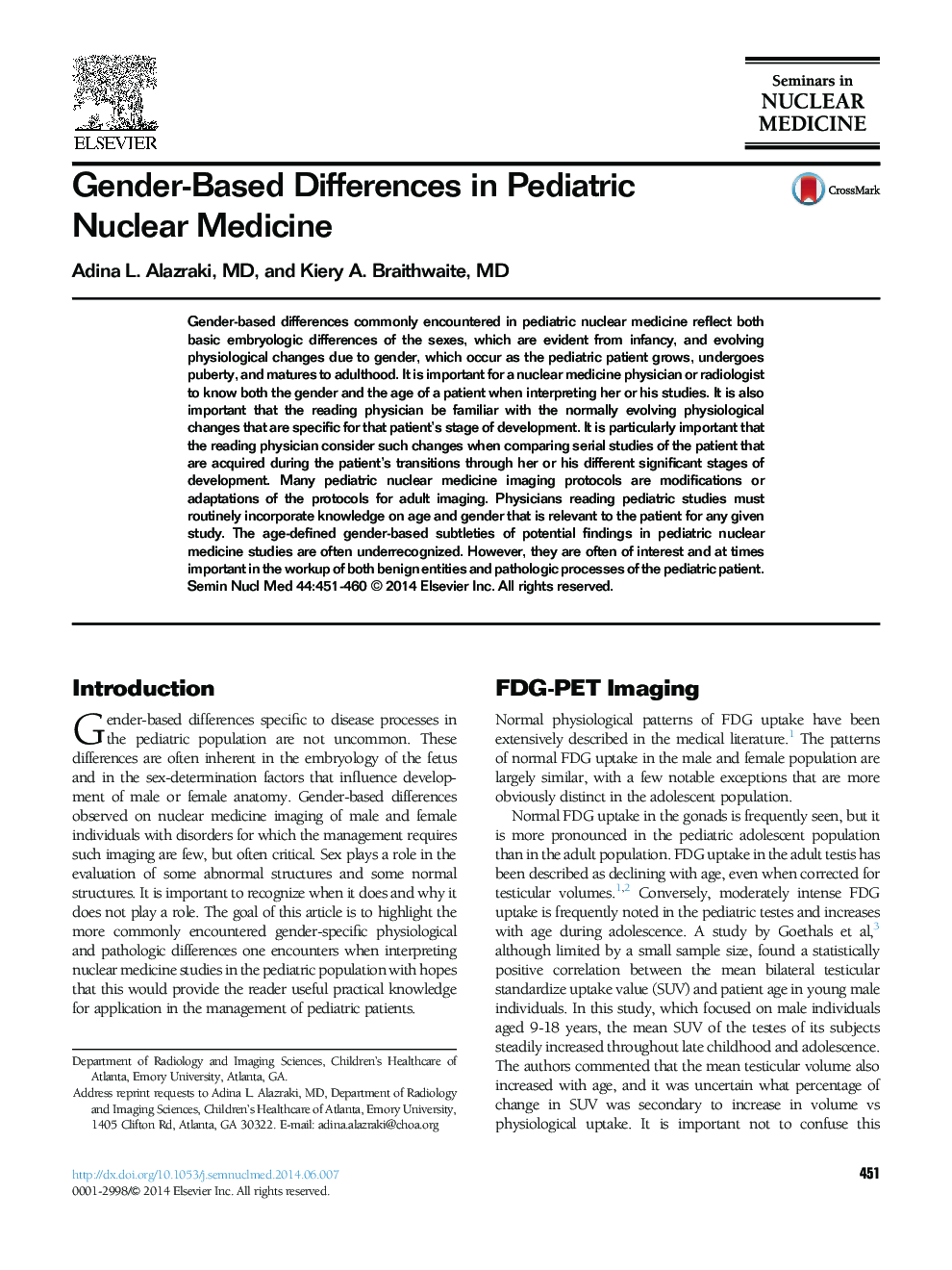| Article ID | Journal | Published Year | Pages | File Type |
|---|---|---|---|---|
| 4250888 | Seminars in Nuclear Medicine | 2014 | 10 Pages |
Abstract
Gender-based differences commonly encountered in pediatric nuclear medicine reflect both basic embryologic differences of the sexes, which are evident from infancy, and evolving physiological changes due to gender, which occur as the pediatric patient grows, undergoes puberty, and matures to adulthood. It is important for a nuclear medicine physician or radiologist to know both the gender and the age of a patient when interpreting her or his studies. It is also important that the reading physician be familiar with the normally evolving physiological changes that are specific for that patient's stage of development. It is particularly important that the reading physician consider such changes when comparing serial studies of the patient that are acquired during the patient's transitions through her or his different significant stages of development. Many pediatric nuclear medicine imaging protocols are modifications or adaptations of the protocols for adult imaging. Physicians reading pediatric studies must routinely incorporate knowledge on age and gender that is relevant to the patient for any given study. The age-defined gender-based subtleties of potential findings in pediatric nuclear medicine studies are often underrecognized. However, they are often of interest and at times important in the workup of both benign entities and pathologic processes of the pediatric patient.
Related Topics
Health Sciences
Medicine and Dentistry
Radiology and Imaging
Authors
Adina L. MD, Kiery A. MD,
